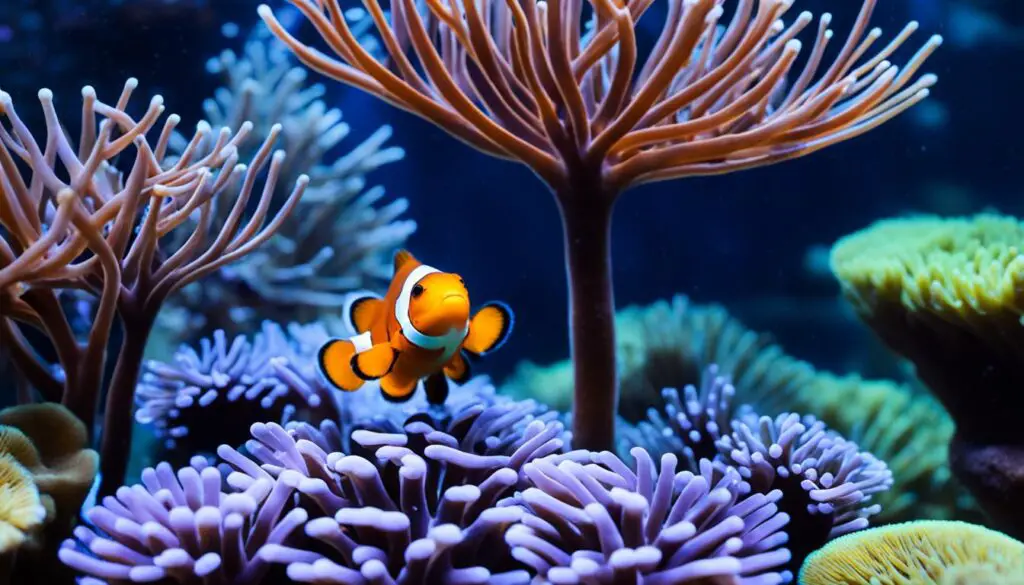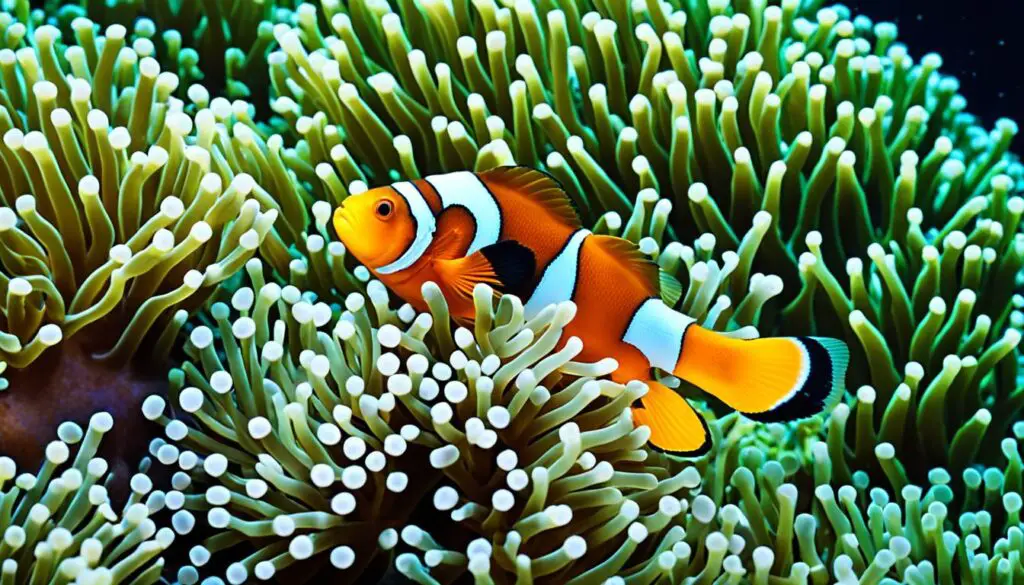Coral Reef Restoration Projects: Building Tomorrow’s Reefs
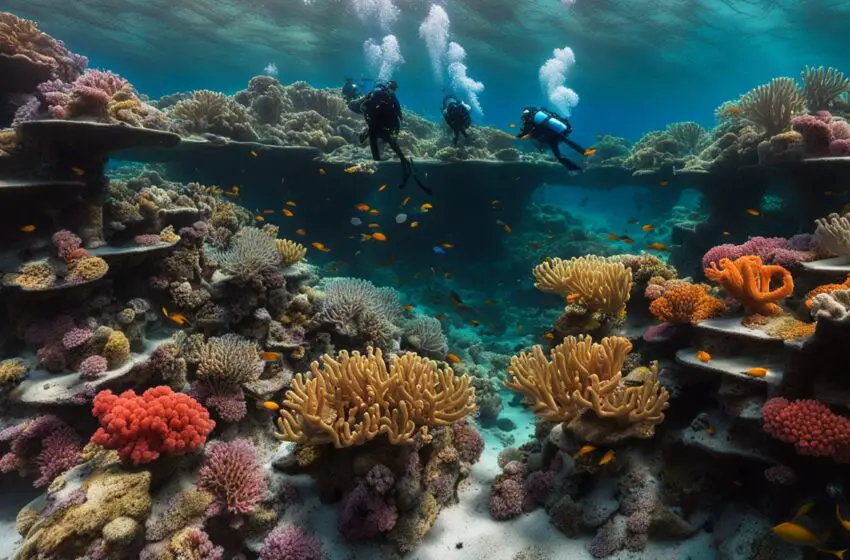
Coral reefs are stunning underwater worlds that do more than look pretty. They help a quarter of all sea life and provide jobs for billions. But, their future is in danger from things like climate change, pollution, and overfishing. These threats are putting these crucial ecosystems at risk.
Efforts to save coral reefs have ramped up, with many trying to fix hurt reefs and bring back their diversity. However, the long-term success of these projects is still up in the air. How we can make these efforts last is a big question for scientists and researchers.
Key Takeaways:
- Coral reefs support a quarter of marine species.
- Restoration projects aim to fix and protect these reefs.
- It’s crucial to consider the environment for these projects to work.
- Initiatives like The Big Build show we can make a big difference.
- Working with local communities is key to the future of coral reefs.
By being smart about how we fix reefs and working together, we can create healthier oceans. Let’s protect these special places for those who come after us.
Environmental Factors Key to Coral Reef Restoration Success
A new study in Plos Biology shows the big role of environmental factors in coral reef success. It says focusing on climate change is key but not enough. Efforts need to fit each site’s unique conditions to help coral survive. This increases the chance of success and the reefs’ long-term health.
The Need for Environmental Context
Just tackling climate change isn’t enough to save coral reefs. Understanding the environment of each reef is crucial for success. This means looking at things like water quality, temperature, and local plants and animals. By doing this, we can meet the specific needs of each area for better restoration.
“Sustainable restoration strategies that take into account the specific environmental conditions of each restoration site are essential for the long-term success of coral reef restoration projects,” explains Dr. Kate Johnson, lead author of the study.
Under-reporting and Comprehensive Understanding
The study pointed out a lack of focus on environmental factors in reef restoration reports. This makes it hard to know what helps or hurts restorations. Researchers say we need to do better risk analyses. This would help us understand the natural environment, improving decision-making for successful restoration.
Crafting Targeted Restoration Strategies
It’s important for restoration experts to really understand the environment. They should work with scientists, locals, and others to get specific site data. This approach leads to better restoration plans that favor coral growth and ecosystem health.
“Considering the environmental context is essential for identifying suitable restoration techniques and determining the most effective timing for intervention,” notes Dr. Johnson.
Using strategies that focus on environmental needs ensures restored coral reefs will thrive. A holistic approach, including detailed risk assessments and teamwork, is crucial. This will lead to successful coral reef restoration and keep these important marine ecosystems healthy.
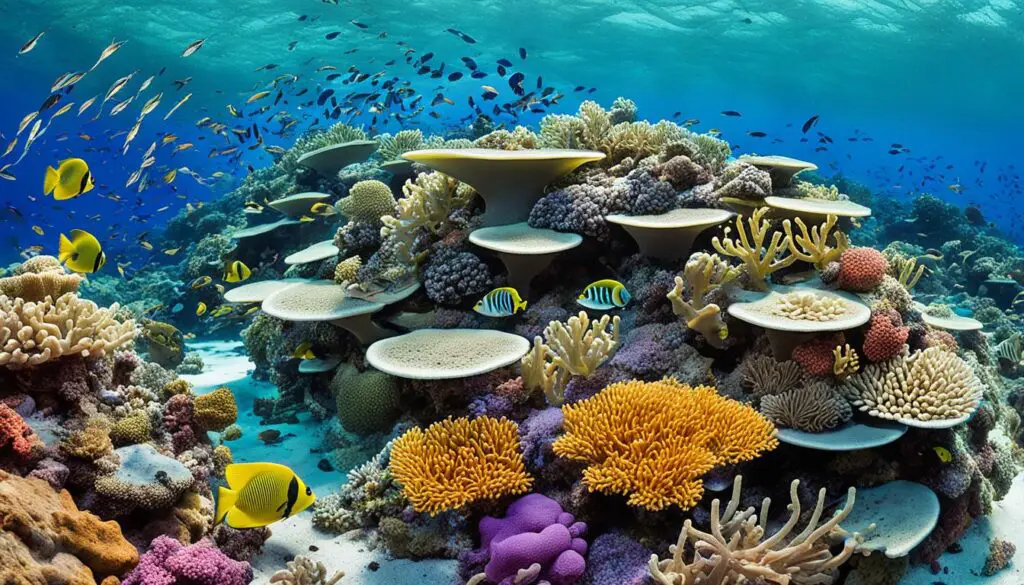
Large-Scale Coral Reef Restoration Achievements
Mars Sustainable Solutions is leading in large-scale coral reef restoration. They launched The Big Build project with 100 people from 17 groups. This project aimed to revive coral reefs in a big way. In Indonesia’s Spermonde Archipelago, they planted 30,000 corals and made a 2,500 square meter reef. This work significantly improved the area’s ecosystem.
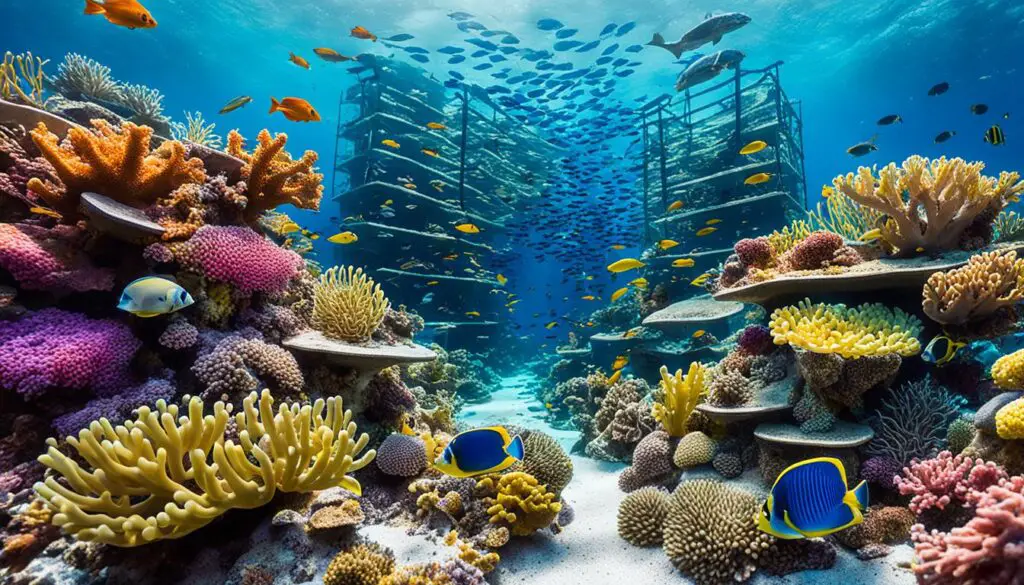
The Big Build is part of Mars Sustainable Solutions’ goal to restore one million corals by 2023. They want to build strong and sustainable reef systems. These systems should be able to cope with climate change and other threats.
Mars Sustainable Solutions uses the Mars Assisted Reef Restoration System (MARRS) method. Teams using MARRS have quickly set up 500 reef stars. This has helped marine life and boosted the recovery of damaged reefs.
The success of The Big Build and MARRS shows how important it is to work together. Partnerships and community help are vital for successful coral restoration. Bringing experts and locals together has a big impact on restoring these essential ecosystems.
Conclusion
Keeping our coral reefs healthy is so important for the future. We can help by using smart ways to fix them and working with local people. This will ensure our oceans remain full of life.
It’s crucial to keep working on coral reefs. These places support a lot of animals and help people make a living. By focusing on saving them, we’re making our oceans better and saving their amazing beauty.
To support coral reefs, everyone’s help matters. From fishing responsibly to fighting pollution, each effort helps. Let’s join together to safeguard the future of our planet’s oceans.
FAQ
What are coral reef restoration projects?
Coral reef restoration projects aim to rebuild and protect damaged coral reefs. They use different techniques to help new corals grow. This supports the recovery of ecosystems.
Why are coral reefs important?
Coral reefs are crucial because they home a quarter of marine life. They also help over a billion people and protect coasts from storms.
What are the main threats to coral reefs?
Climate change, pollution, overfishing, and coastal work damage coral reefs. These threats cause coral bleaching, habitat loss, and loss of biodiversity.
How can environmental factors contribute to the success of coral reef restoration projects?
Considering local conditions like water quality and temperature is key. This makes restoration efforts suit the needs of coral. It improves their survival chances.
What are sustainable restoration strategies?
Sustainable strategies use eco-friendly methods to rebuild coral reefs. They focus on the ecosystem’s long-term health. And limit harm to the environment.
How can large-scale coral reef restoration be achieved?
To achieve large-scale restoration, we need partnerships and community help. For example, initiatives like Mars Sustainable Solutions’ “The Big Build” plant thousands of corals. They rebuild reefs on a big scale.
How can individuals support coral reef restoration efforts?
You can help by talking about reef importance and donating to conservation. Also, by living sustainably. Volunteering in restoration work or joining science projects are great too.
Source Links
- https://www.prnewswire.com/news-releases/the-big-build—mars-leads-one-of-the-largest-coral-restoration-events-in-history-301892155.html
- https://www.umu.se/en/news/tomorrows-reefs_11913195/
- https://www.buildingcoral.com/news/local-roots-global-impact-how-community-involvement-is-vital-to-restoring-coral-reefs

